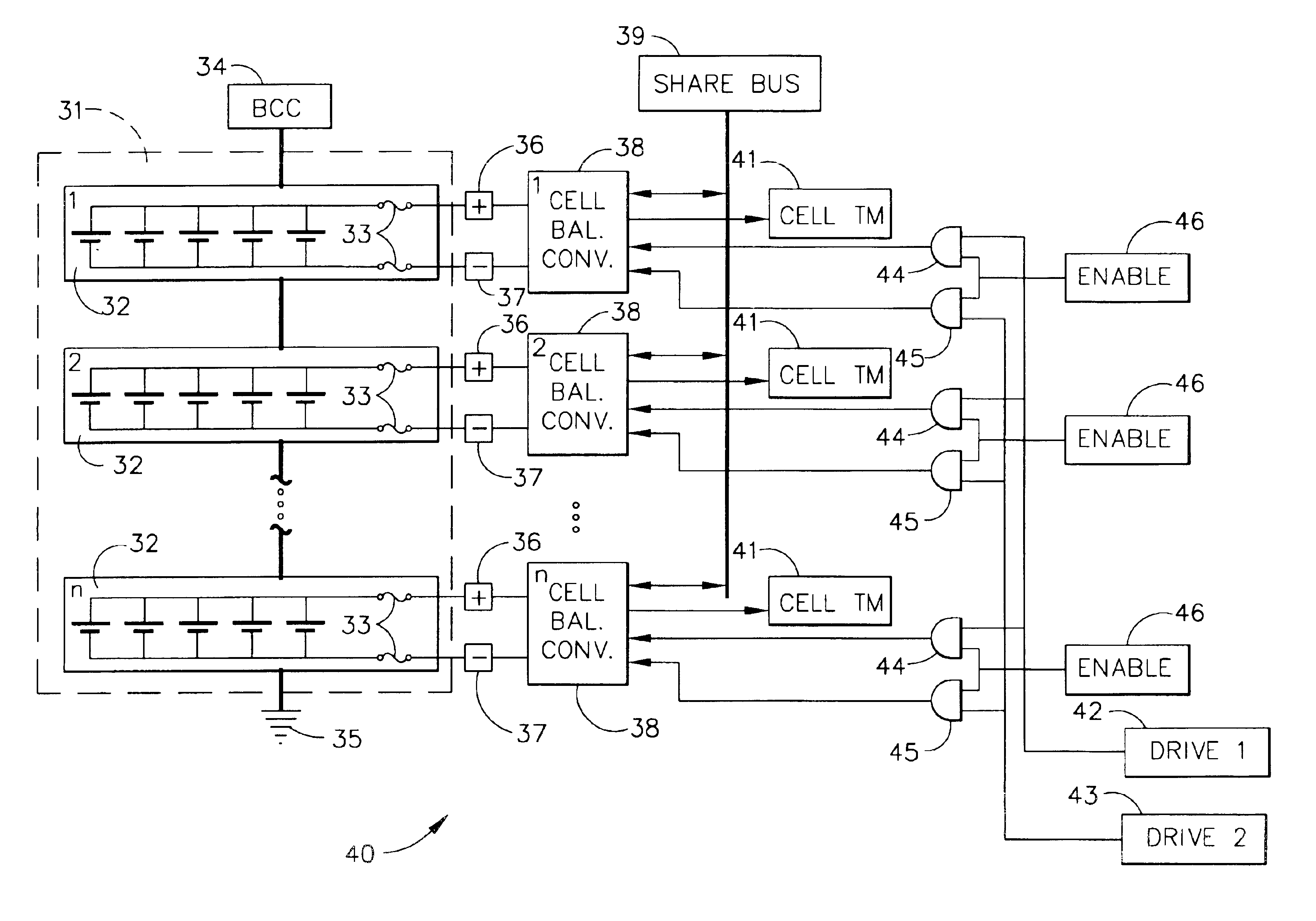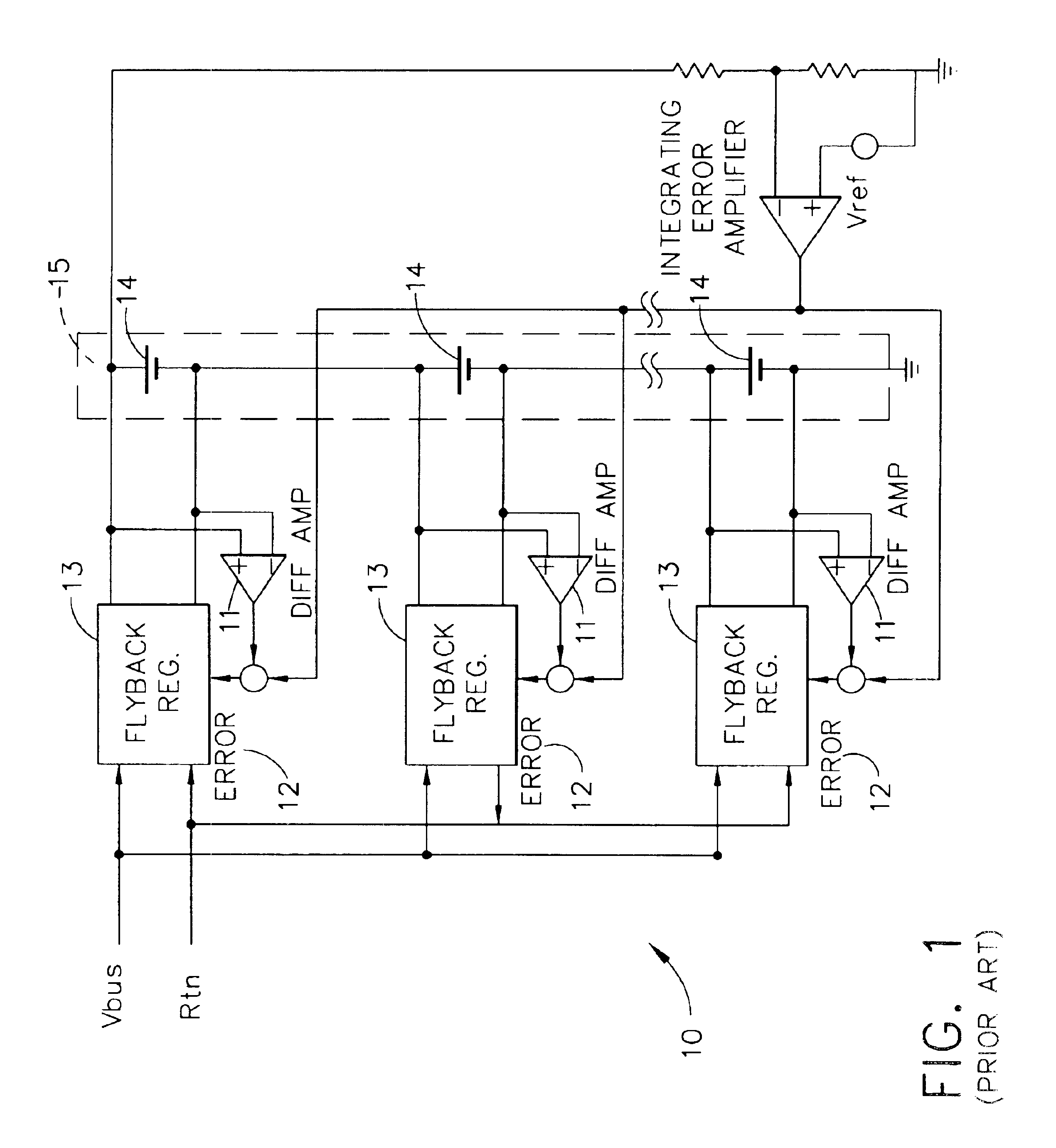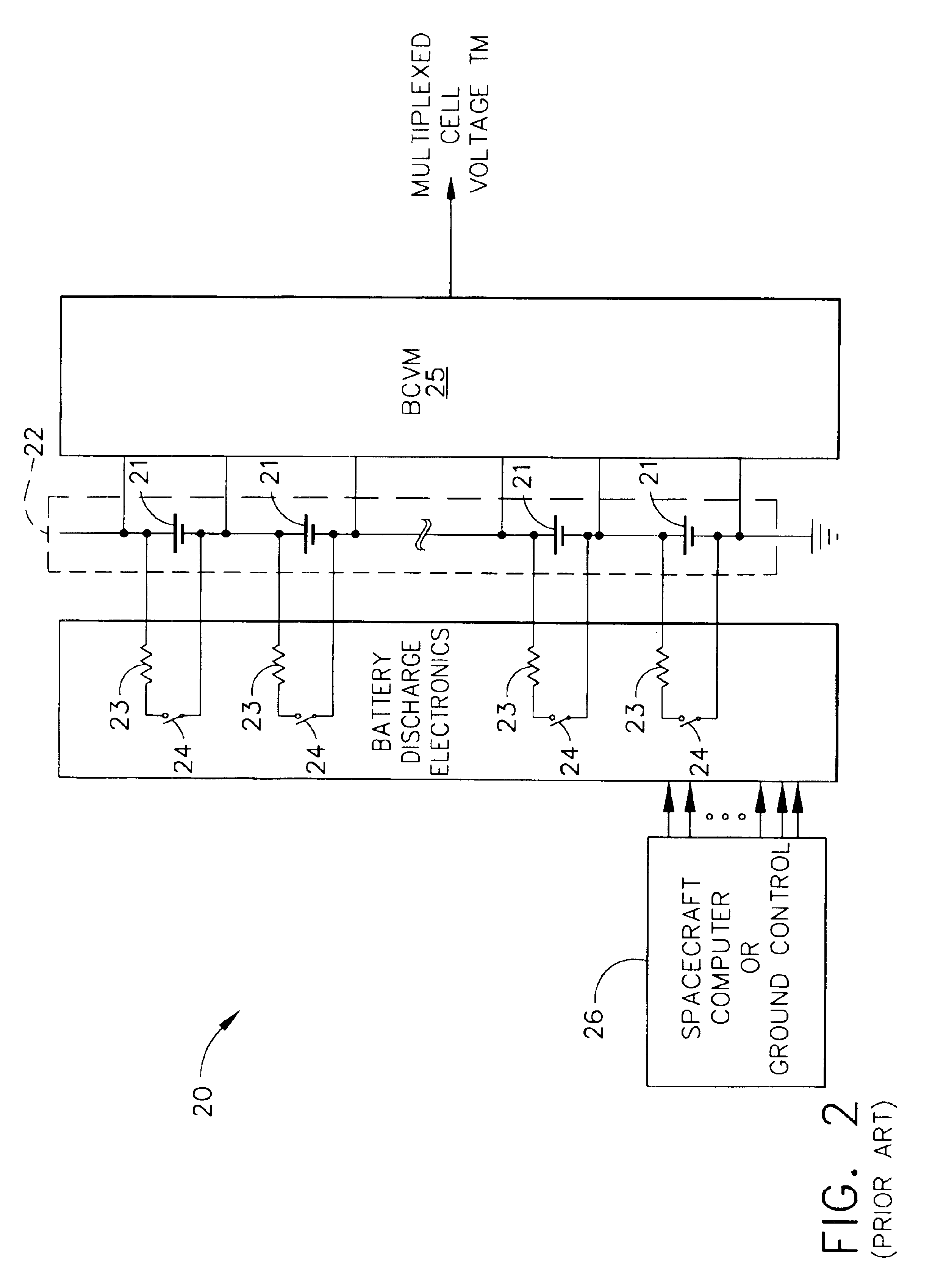Autonomous battery cell balancing system with integrated voltage monitoring
a lithiumion cell and voltage monitoring technology, applied in the field of batteries, can solve the problems of failure of spacecraft mission, increased requirements for on-board equipment, and increased mass and size of electrical power supply subsystems,
- Summary
- Abstract
- Description
- Claims
- Application Information
AI Technical Summary
Benefits of technology
Problems solved by technology
Method used
Image
Examples
Embodiment Construction
The following detailed description is of the best currently contemplated modes of carrying out the invention. The description is not to be taken in a limiting sense, but is made merely for the purpose of illustrating the general principles of the invention, since the scope of the invention is best defined by the appended claims.
The present invention provides an autonomous lithium-ion cell balancing system suitable for balancing the energy levels of a plurality of cells of a lithium-ion battery continuously, reliably, and economically. The present invention also provides a battery electronics unit comprising an autonomous lithium-ion cell balancing system for bilateral energy transfer that is able to balance a series string of lithium-ion cells without a reference or a control mechanism and therefore, reduces the complexity and the overall parts count of the system. The present invention further provides a method for autonomous cell balancing of multiple lithium-ion cells including i...
PUM
| Property | Measurement | Unit |
|---|---|---|
| mass | aaaaa | aaaaa |
| cell voltage | aaaaa | aaaaa |
| cell voltage | aaaaa | aaaaa |
Abstract
Description
Claims
Application Information
 Login to View More
Login to View More - R&D
- Intellectual Property
- Life Sciences
- Materials
- Tech Scout
- Unparalleled Data Quality
- Higher Quality Content
- 60% Fewer Hallucinations
Browse by: Latest US Patents, China's latest patents, Technical Efficacy Thesaurus, Application Domain, Technology Topic, Popular Technical Reports.
© 2025 PatSnap. All rights reserved.Legal|Privacy policy|Modern Slavery Act Transparency Statement|Sitemap|About US| Contact US: help@patsnap.com



